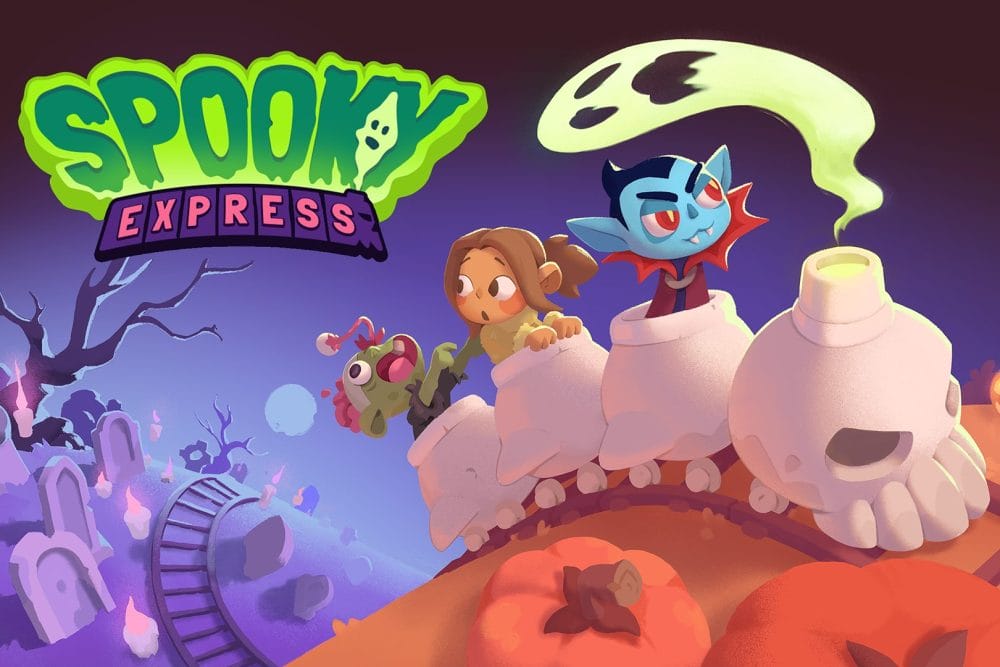Introduction
What if Charles Dickens and H.P. Lovecraft wrote a tale together? The result might look something like Venture to the Vile, the first title from Indie studio Cut to Bits. Set in a world both idyllic and unsettling, where bright facades hide creeping corruption, and every character holds a hint of the bizarre. But much like the eponymous Vile that threatens to consume its world, a few flaws seep into the game, marring its otherwise compelling and imaginative experience.
Premise
Set in the quintessentially Victorian country town of Rainybrook, you play as a young, gangly boy wearing a deer mask. After saying goodbye to your mother, you set off into the nearby forest to meet up with your best friend, Ella. After a short timelapse, the now teenage duo are separated while out checking their rat traps in the woods. Falling with a collapsing bridge, the masked boy wakes up in an underground cavern and is pursued by a shadowy beast. He successfully escapes, only to pass out on the forest floor, left infected by the twisted monster.
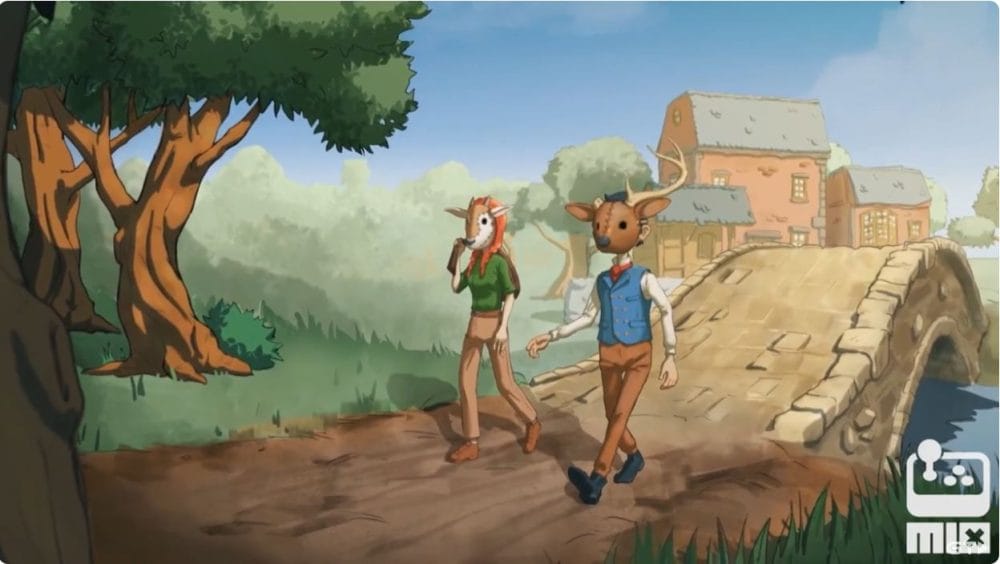
Our masked protagonist wakes up on the surgical table of Dr. Crow, the beaked scientist who the two friends were catching rats for. It has been a month since the events in the forest, and Ella has not been seen since. Dr. Crow explains how Rainybrook and it’s inhabitants are struggling with this encroaching corruption called the Vile. Our antlered hero has managed to absorb some of it, allowing him to mutate his arm into a blade, much to the doctor’s creepy curiosity.
As the only person able to traverse this infected town and surrounding landscape, the boy must fetch samples of the Vile to help the good doctor make a cure. With a town to save, a cure to make, and a best friend to find, our hero has quite the venture ahead of them.
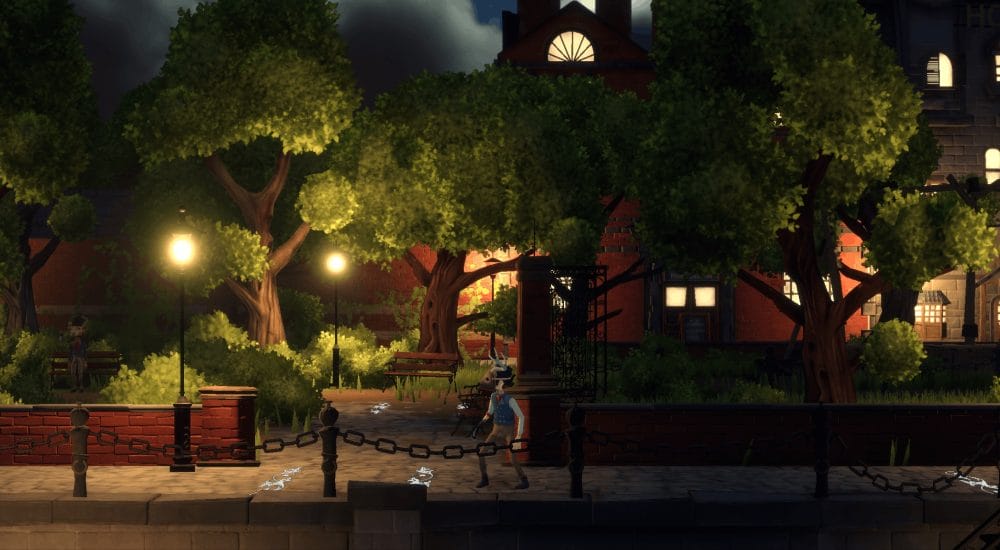
Gameplay
Venture to the Vile is a 3D metroidvania where all the action takes place on a 2D plane. Many of us have experienced parallax scrolling backgrounds, designed to give the game world a sense of depth. Instead, Venture to the Vile has you move towards and away from the screen at highlighted shortcuts, letting you navigate between different planes. This has such a profound impact on a number of elements, in particular the world and level design. Every environment, from cobblestone streets and wooden jetties to dark mining tunnels and crypt halls, are dense with detail. it feels like Rainybrook fills a real space unlike any other 2D game has done.
Secrets and puzzles also benefit from this design choice, enticing the player to keep an eye on their surroundings, taking note of important details, or future obstacles. I loved how as I ran through a dense forest I could spy another monster-ridden path, or an important item in the background between the trees. Venture to the Vile‘s world feels completely fleshed out, and this plane-shifting mechanic consistently kept me engaged and immersed. The game naturally entices you to explore, pulling you deeper into its twisted existence.
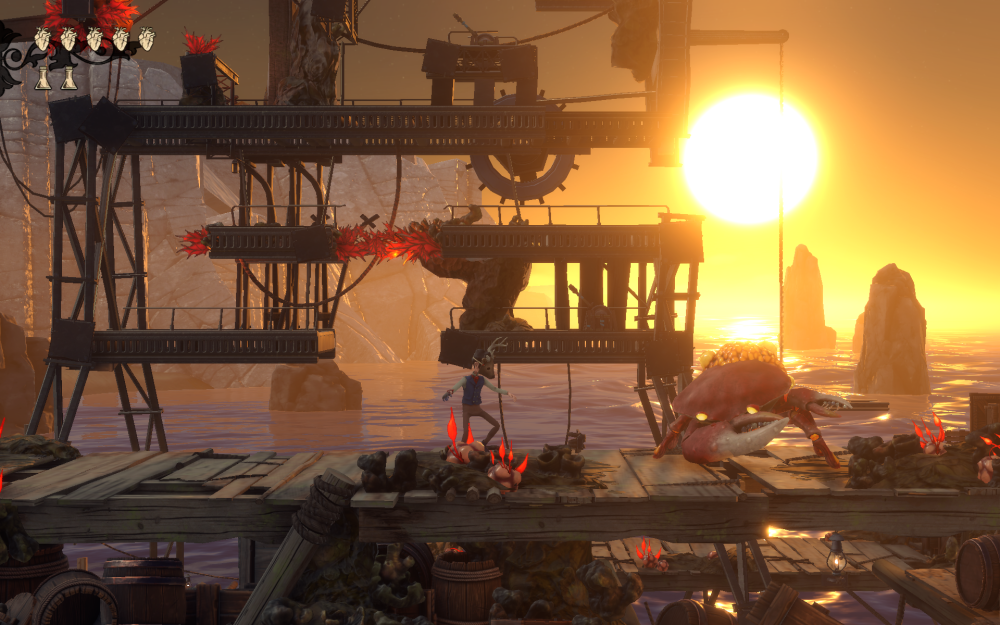
Rainybrook and its surroundings have nearly completely succumbed to the pervasive Vile, with the wildlife and many of the people being horribly twisted by it. So it’s a good thing our young hero can wield it! Venture to the Vile‘s combat and movement are what I would call “The Metroidvania Toolkit”, which is comprised of all the classic moves and abilities found across the genre. Starting with a basic 3-hit combo, a dodge and a single jump, you unlock the familiar double jump, wall grab, dash, heavy attack (that can break certain walls), a grappling hook, and a downward smash (for breaking certain floors). While nothing here stands out on paper, and combat never really evolves much over the game, I found it fun and at times quite challenging.
If the player takes damage, a number of anatomically correct hearts, which represent health, can be replenished using flasks. Campsites are dotted throughout the game that act as save points, refilling your hearts and tonics, as well as providing the option to progress time. The game’s day/night cycle and changing weather help bolster its immersive nature, and also affect which enemies are out and about.
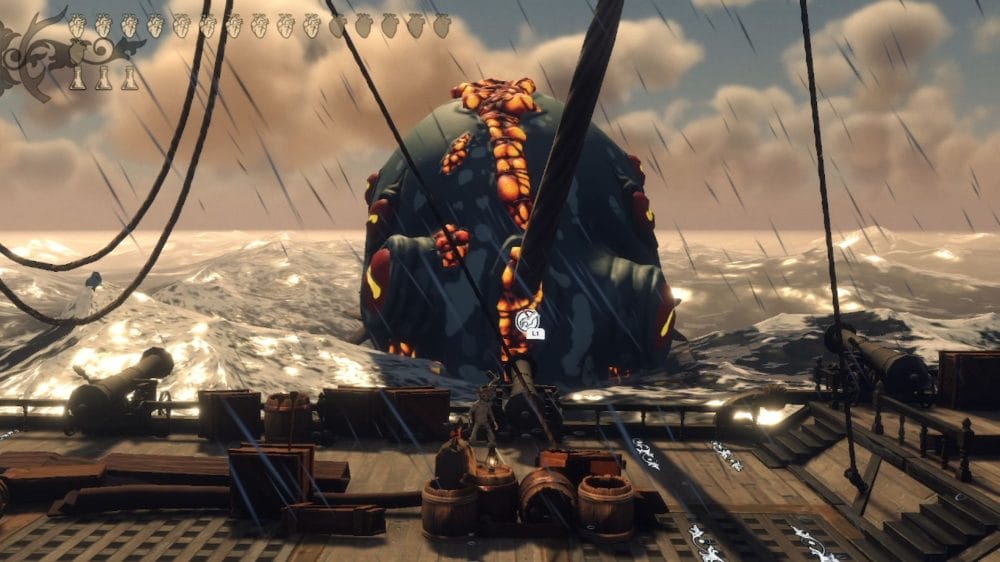
As you explore the world, slaying the mutated monsters inhabiting it, you collect Vile essence and various materials, like claws, bones, organs, etc. These are then used to upgrade the player’s abilities, adding extra hits to combos, increasing reward drops from enemies, and even some great UX enhancements like a compass that points to collectibles. You unlock your new movement and attack options from the game’s various bosses. These are another highlight of Venture to the Vile, as each one is distinct in both creature and encounter design, with several making use of the game’s plane-shifting mechanic. My personal favourite was the giant horned kraken that attacks, punching it’s tentacles up through the deck of your ship as you navigate between several cannons. Whether a test of skill, or more of a puzzle needing to be solved, I was excited to see what each encounter had in store.
As I mentioned earlier, there are still several surviving townsfolk left in and around Rainybrook, some of whom can assist our young hero, and others in need of help. Venture to the Vile is stuffed full of side quests and content, ranging in style and complexity. Many of these you pick up from speaking to NPCs, but a handful can be found organically out in the world. They are all tracked in your journal, which while handy, is a bit obtuse in how to breaks up and updates quests. You also track your skills, enemies, items, and have a map of the game which can also be a bit tricky to read.
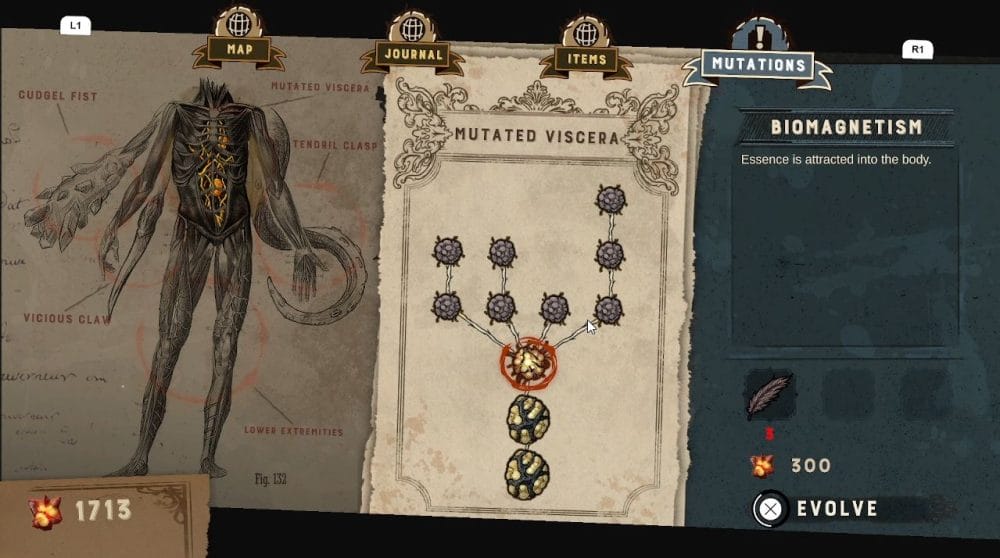
Venture to the Vile was a relatively smooth experience form start to finish, but there are certain pockets where the FPS would drop significantly. These never happened at crucial moments, and didn’t seem predicated on what was happening on screen, so while they were obnoxious they didn’t ruin the game for me. Some animations are a bit quick, but not something that impacted combat or traversal; it’s a bit rough round the edges.
Writing/Narrative
The main narrative of Venture to the Vile is an interesting one, leading to a final choice that plays with the idea of good/bad endings. While I was compelled to reach the end, find Ella and deal with the Vile, it wasn’t something that sat in the forefront of my mind. I go up to the final moments of the game in about eight or nine hours while enjoying some side content along the way. With how many side quests that I still have (and know of) I feel Venture to the Vile could be double that length. In a sense the side content feels just as important as the main plot, which is not ideal but is built on great writing across the board.
I found many of the side quests to be more entertaining and intriguing, often giving some insight into this strange world. The writing for all the NPCs is fun and weird, giving each character their own quirks and tone. To be quite frank, I don’t think the people of Rainybrook were particularly normal before the Vile showed up, animal masks being the tip of the iceberg!
Extra details about the world and it’s inhabitants can be found in notes throughout the game. Some give context for the setting and it’s characters, with quite a few revealing grisly details pertaining to the weeks leading up to present day. Venture to the Vile feels like the sort of place where the Brothers Grimm folktales were just day to day occurrences.
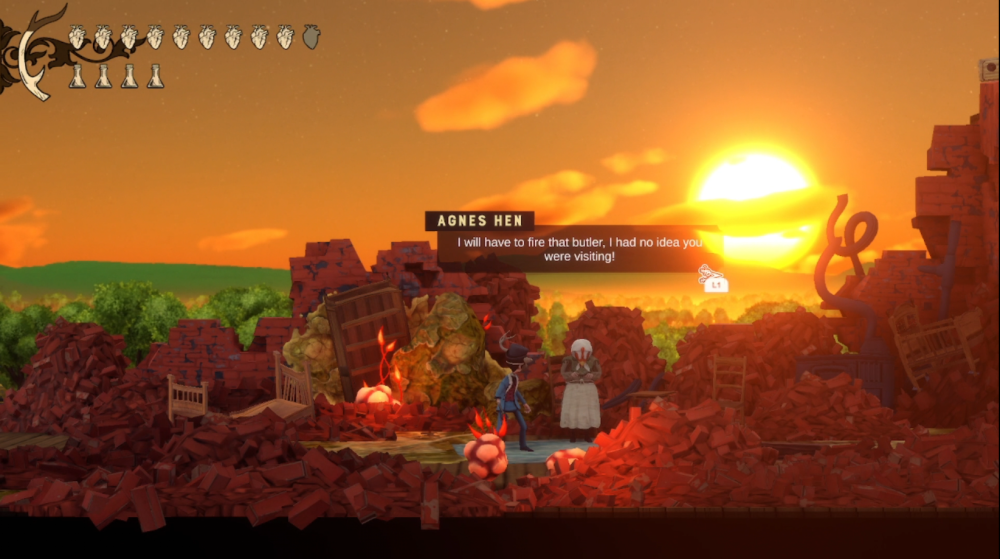
Visuals/Art Direction
The art direction for Venture to the Vile is top notch, and had me intrigued from the moment I saw the hollow-eyed appearance of the masked protagonist. The stylised Victorian aesthetic, covered in the grotesque Vile to varying degrees, is a perfect blend of a grisly fairy-tale and a historical drama. Partially collapsed redbrick townhouses with peeling floral wallpaper, fog shrouded rows of solemn gravestones and crypts, even an old-timey gym with leather punching bags; Venture to the Vile‘s is rich with detail and authenticity.
The masked masses of Rainybrook are a sight to behold, but it is the enemy and boss designs that really show off the dev team’s creativity. There is a massive menagerie of monsters for you to contend with, and each one is more imaginative than the last. My personal favourites were two large frogs that had fused together, a tree of skulls, and huge moles with clawed hands covering their faces. The bosses are just as disgusting and delightful, and I honestly have a hard time picking a favourite. They are all so imaginative in their appearance, providing some real “Wow” moments.
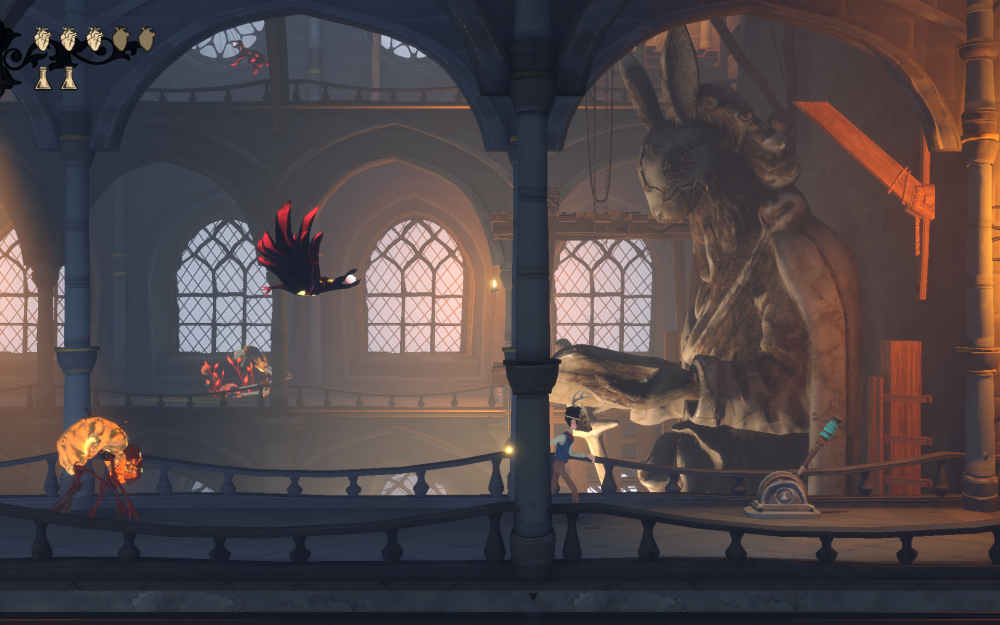
Sound Design/Music
Venture to the Vile‘s sound design and music are an excellent audio representation of it’s two tone atmosphere; a blend of charming and unnerving. The soundtrack is a lovely collection of gentle, discordant ambience; like a music box from a horror film. The sound design is a perfect mirror of this, pairing the silly witterings of the game’s NPCs with the visceral sounds of combat. Vile ridden creatures make suitably unpleasant growls, shrieks and gurgles, as the hero’s attacks slice with vicious clarity and smash with a satisfying crunch.
Conclusion
Venture to the Vile is a confident, alluring, and above all enjoyable metroidvania game. While its flaws may creep in like the Vile, they never truly consume the brilliance of this macabre yet enchanting tale, making Venture to the Vile a journey well worth taking.

Venture to the Vile is out now on PC, PlayStation 4 and PlayStation 5.
Thank you to the developers for providing a review key. Venture to the Vile was reviewed on PlayStation 5.




